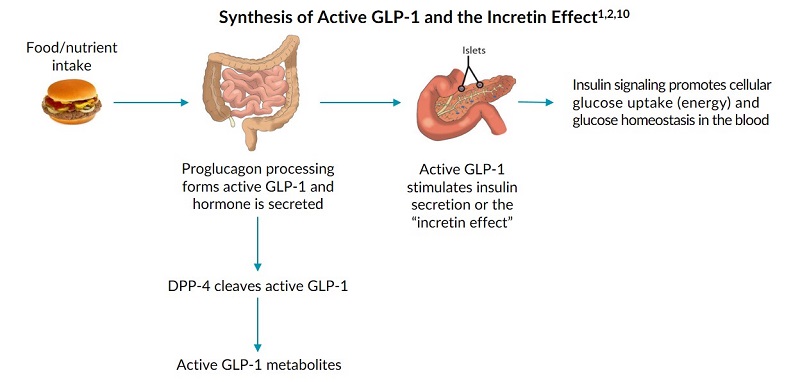
Managing weight loss and diabetes has become more accessible with advancements in medical treatments. One such breakthrough involves GLP-1 receptor agonists, medications designed to mimic the action of a naturally occurring hormone in the body. These medications have proven effective for both blood sugar regulation and appetite suppression, providing dual benefits for those with type 2 diabetes and obesity. How Does GLP-1 Work is a question, to which many want an answer, as it holds the key to understanding these health benefits. This detailed article explains its role in helping people manage these two crucial aspects of health.
What is GLP-1?
GLP-1 (Glucagon-Like Peptide-1) is a hormone produced in the gut after eating. This hormone helps maintain blood sugar levels and control appetite. GLP-1 enhances insulin production, inhibits glucagon (a hormone that raises blood sugar), and slows down the digestive process. This combination leads to better blood sugar control and longer feelings of fullness after meals, essential for weight management and diabetes care.
How Does GLP-1 Help With Diabetes?
In diabetes management, How Does GLP-1 Work becomes clearer when you look at its role in increasing insulin secretion in response to rising blood sugar levels. This helps regulate glucose and ensures the body does not experience dangerously high blood sugar spikes. Additionally, by reducing the release of glucagon, GLP-1 further prevents unnecessary glucose production in the liver, contributing to better overall glycemic control. People with type 2 diabetes, in particular, benefit from this treatment as it directly addresses insulin resistance, a common issue in the condition. GLP-1 medications are often combined with lifestyle changes, such as improved diet and exercise, to optimize diabetes control.
How Does GLP-1 Aid in Weight Loss?
When it comes to weight loss, GLP-1 receptor agonists reduce appetite and increase feelings of fullness, leading to fewer calories being consumed. This effect on appetite is critical for people struggling with obesity. By slowing down the digestive process, these medications ensure that people feel satisfied for longer after meals.
Over time, this leads to weight reduction, especially when combined with proper nutrition and physical activity. Some popular GLP-1 receptor agonists, such as Ozempic and Wegovy, are widely prescribed for chronic weight management. These medications have shown significant results in terms of weight loss and are approved for people with a BMI over 30 or with a BMI of 27 if they have a weight-related condition.
Are There Side Effects?
Like any medication, GLP-1 receptor agonists can come with side effects. Common ones include nausea, vomiting, diarrhea, and headaches, especially during the initial phase of treatment. These side effects decrease over time as the body adjusts to the medication. It is essential to work closely with healthcare providers to manage these side effects and ensure the treatment is safe and effective.
Conclusion
How Does GLP-1 Work? To sum up, it plays a dual role in helping people manage weight loss and diabetes. By regulating blood sugar and suppressing appetite, GLP-1 receptor agonists offer significant benefits for those with type 2 diabetes and obesity. You achieve the best outcomes when you pair these medications with lifestyle changes, such as a healthy diet and regular physical activity. Always consult a healthcare provider to determine if GLP-1 treatments are the right option for your health needs.







